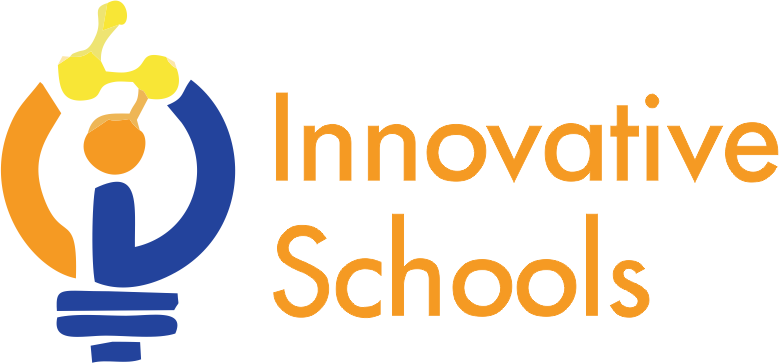The Cost Savings of Smart Schooling: How Schools Can Reduce Expenses with Technology
In today’s world, technology is becoming increasingly important in the classroom. Smart schooling, or the use of technology to improve the educational experience, is becoming more and more popular in schools. Smart schooling can help schools reduce expenses and save money in a variety of ways.
One way that schools can save money through smart schooling is by reducing the need for physical textbooks. By using digital textbooks, schools can save money on the cost of printing and distributing physical textbooks. Digital textbooks can also be updated more quickly and easily than physical textbooks, which can save schools money on reprinting costs. Additionally, digital textbooks can be accessed from any device, which can reduce the need for physical textbooks in the classroom.
Another way that schools can save money through smart schooling is by reducing the need for physical classrooms. By using virtual classrooms, schools can save money on the cost of building and maintaining physical classrooms. Virtual classrooms can also be accessed from any device, which can reduce the need for physical classrooms in the classroom. Additionally, virtual classrooms can be used to teach students from anywhere in the world, which can reduce the need for physical classrooms in different locations.
Finally, schools can save money through smart schooling by reducing the need for physical teachers. By using online learning platforms, schools can save money on the cost of hiring and training physical teachers. Online learning platforms can also be used to teach students from anywhere in the world, which can reduce the need for physical teachers in different locations. Additionally, online learning platforms can be used to teach students at their own pace, which can reduce the need for physical teachers in the classroom.
In conclusion, smart schooling can help schools reduce expenses and save money in a variety of ways. By using digital textbooks, virtual classrooms, and online learning platforms, schools can reduce the need for physical textbooks, classrooms, and teachers. Smart schooling can help schools save money and improve the educational experience for students.
The Benefits of Smart Schooling for Student Learning: How Technology Enhances Education
Technology has become an integral part of modern education, and its use in the classroom has been shown to have numerous benefits for student learning. Smart schooling, which incorporates the use of technology into the classroom, has been proven to enhance student engagement, improve student performance, and increase access to educational resources.
First, the use of technology in the classroom has been shown to increase student engagement. By providing students with interactive tools such as tablets, laptops, and interactive whiteboards, teachers can create a more engaging learning environment. These tools allow students to interact with the material in a more meaningful way, which can lead to increased engagement and improved learning outcomes. Additionally, the use of technology can help to reduce student boredom, as students are more likely to be engaged when they are able to interact with the material in a more dynamic way.
Second, the use of technology in the classroom has been shown to improve student performance. By providing students with access to educational resources such as online tutorials, videos, and simulations, teachers can help students to better understand the material. Additionally, the use of technology can help to reduce the amount of time spent on mundane tasks such as grading and record-keeping, allowing teachers to focus more on teaching and student learning.
Finally, the use of technology in the classroom can increase access to educational resources. By providing students with access to online resources, teachers can ensure that all students have access to the same educational materials, regardless of their location or economic status. Additionally, the use of technology can help to reduce the cost of educational materials, as many online resources are available for free or at a reduced cost.
In conclusion, the use of technology in the classroom has been shown to have numerous benefits for student learning. Smart schooling, which incorporates the use of technology into the classroom, has been proven to enhance student engagement, improve student performance, and increase access to educational resources. As such, it is clear that the use of technology in the classroom can be a powerful tool for improving student learning.
The Impact of Smart Schooling on Teacher Productivity: How Technology Improves Efficiency
Smart schooling is a term used to describe the use of technology in the classroom to improve the efficiency of teaching and learning. It is becoming increasingly popular in educational institutions around the world, as it has the potential to revolutionize the way teachers and students interact. Smart schooling can be used to enhance the teaching process, improve student engagement, and increase teacher productivity.
The use of technology in the classroom can help teachers to become more efficient in their teaching. Smart schooling can provide teachers with access to a range of digital tools and resources that can be used to create engaging and interactive lessons. For example, teachers can use interactive whiteboards to present lessons, or they can use online tools such as video conferencing to connect with students in remote locations. Additionally, teachers can use online assessment tools to quickly and accurately assess student progress.
Smart schooling can also help to improve student engagement. By using technology in the classroom, teachers can create an interactive learning environment that encourages students to participate and engage with the material. For example, teachers can use online quizzes and games to make learning more fun and engaging. Additionally, teachers can use virtual reality tools to create immersive learning experiences that can help to engage students in the material.
Finally, smart schooling can help to increase teacher productivity. By using technology in the classroom, teachers can save time on administrative tasks such as grading and attendance tracking. Additionally, teachers can use online tools to quickly and easily create lesson plans and materials. This can help to free up more time for teachers to focus on teaching and engaging with students.
In conclusion, smart schooling has the potential to revolutionize the way teachers and students interact. It can help to improve the teaching process, increase student engagement, and increase teacher productivity. As such, it is becoming increasingly popular in educational institutions around the world.
The Benefits of Smart Schooling for School Administration: How Technology Streamlines Processes
The use of technology in the school setting has become increasingly popular in recent years, and for good reason. Smart schooling, or the use of technology to streamline processes, can provide a number of benefits to school administration. By utilizing technology, school administrators can save time, money, and resources, while also improving the overall quality of education.
One of the primary benefits of smart schooling is the ability to automate administrative tasks. By using technology, school administrators can automate mundane tasks such as attendance tracking, grading, and scheduling. This automation can save time and money, as well as reduce the amount of paperwork that needs to be completed. Additionally, automated processes can help to ensure accuracy and consistency in the data collected.
Another benefit of smart schooling is the ability to improve communication between teachers, students, and parents. Technology can be used to create a virtual learning environment, allowing teachers to easily share resources and assignments with students. Additionally, technology can be used to facilitate communication between teachers and parents, allowing for more efficient communication and collaboration.
Finally, smart schooling can help to improve the overall quality of education. By utilizing technology, school administrators can access data quickly and easily, allowing them to make informed decisions about curriculum and instruction. Additionally, technology can be used to provide students with personalized learning experiences, allowing them to learn at their own pace and in their own way.
In conclusion, smart schooling can provide a number of benefits to school administration. By utilizing technology, school administrators can save time, money, and resources, while also improving the overall quality of education. Through automated processes, improved communication, and personalized learning experiences, smart schooling can help to streamline processes and ensure that students receive the best possible education.
The Financial Benefits of Smart Schooling: How Schools Can Increase Revenue with Technology
The use of technology in the classroom has become increasingly popular in recent years, and for good reason. Smart schooling, or the integration of technology into the classroom, has been proven to improve student engagement, increase student achievement, and even reduce costs for schools. However, what is often overlooked is the potential for smart schooling to increase school revenue. By leveraging technology to improve the efficiency of their operations, schools can increase their revenue and better serve their students.
One of the most obvious ways that smart schooling can increase school revenue is through cost savings. By utilizing technology to automate administrative tasks, schools can reduce the amount of time and money spent on manual processes. This can include everything from streamlining the registration process to automating attendance tracking. By reducing the amount of time and money spent on administrative tasks, schools can free up resources to be used elsewhere.
Another way that smart schooling can increase school revenue is through improved student engagement. By utilizing technology to create interactive and engaging learning experiences, schools can increase student engagement and improve student achievement. This can lead to higher test scores, which can result in increased funding from the state or federal government. Additionally, improved student engagement can lead to increased enrollment, which can also result in increased revenue for the school.
Finally, smart schooling can increase school revenue through improved marketing and communication. By utilizing technology to create a more efficient and effective communication system, schools can reach more potential students and families. This can lead to increased enrollment, which can result in increased revenue for the school. Additionally, improved communication can lead to increased donations from alumni and other supporters, which can also result in increased revenue for the school.
In conclusion, smart schooling can be a powerful tool for increasing school revenue. By utilizing technology to automate administrative tasks, improve student engagement, and improve communication, schools can increase their revenue and better serve their students. With the right technology and implementation strategy, schools can leverage smart schooling to increase their revenue and better serve their students.





